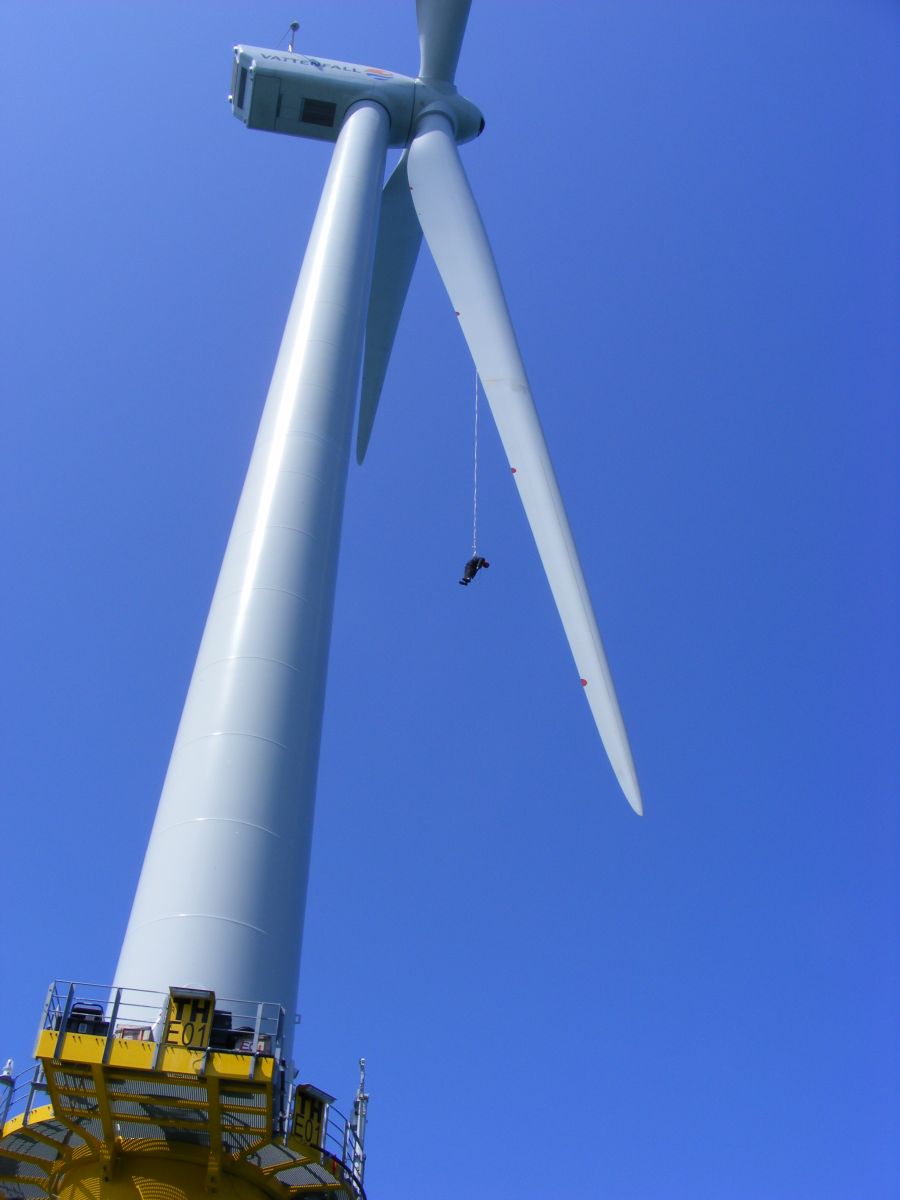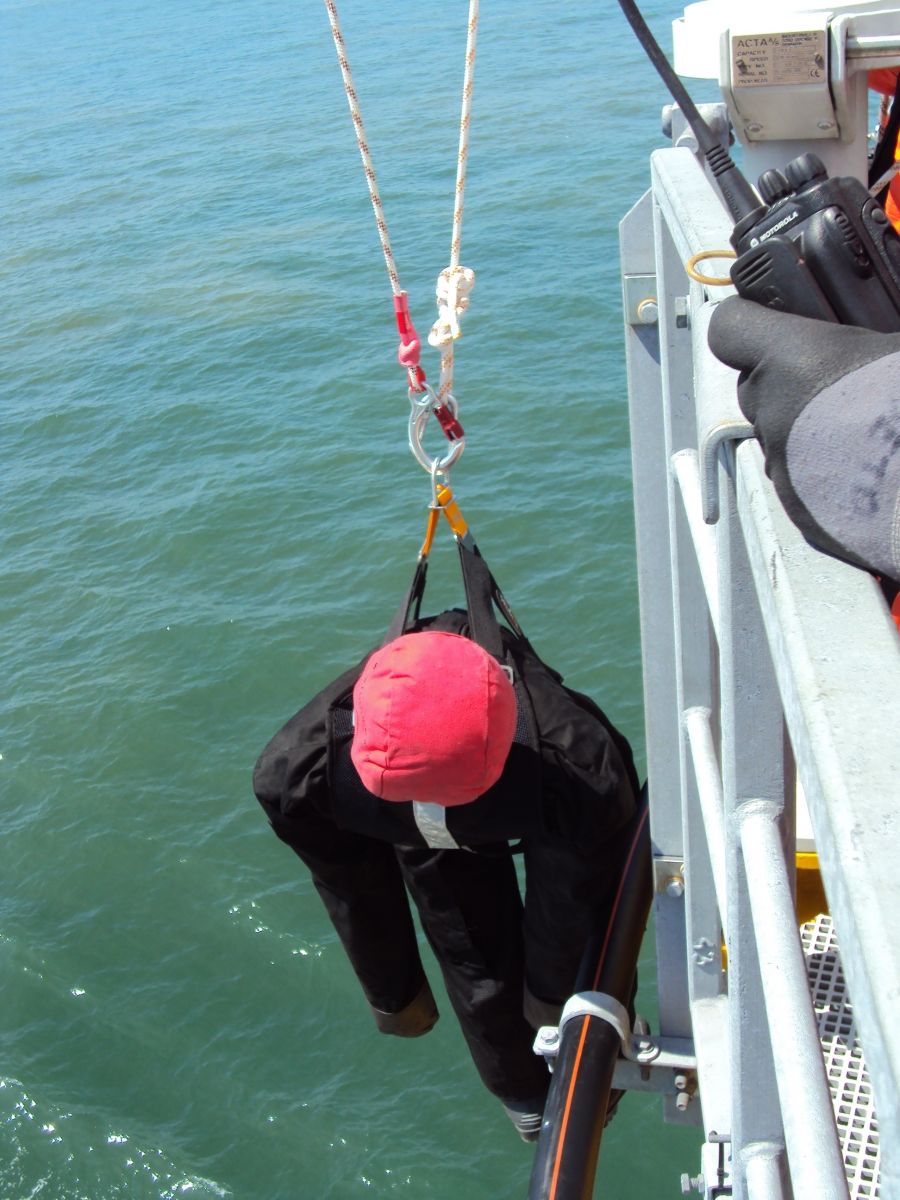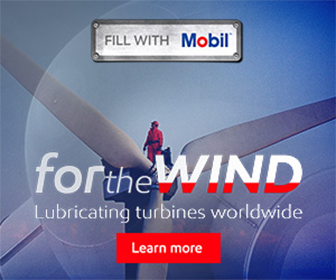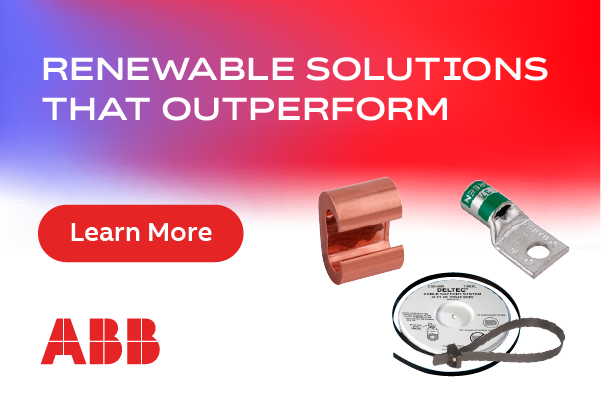Protecting from a Wind Fall

In many ways, height safety in the clean energy sector resembles that of any other industry. Workers still rely on the same basic A-B-C model of building a personal fall arrest system: an appropriate Anchorage connector, which attaches to a sound structure; Bodywear that the worker dons whenever exposed to a fall hazards; and a Connector to connect the two. There are, however, a few considerations that seem to crop up in wind and solar more frequently than most other jobsites.
Harness D-ring Configuration and Design
More so than their counterparts working on residential or commercial buildings, workers climbing wind turbines often rely on fixed ladder-systems, in which a worker connects a cable grab device to a tensioned steel cable that runs the height of a permanently installed steel ladder. Also, while ascending or descending the ladder, they may be required to stop and perform work at a specific location for an extended period of time - also called Work Positioning. To properly address these two fall protection scenarios, a full-body harness must include a sternal D-ring connection point and side D-ring connection points, in addition to the standard dorsal D-ring most commonly used for fall arrest.
A sternal D-ring connection to a fixed-ladder system must be configured to keep total free fall to 3' or less, and may only be used while actively ascending or descending the fixed ladder system. At no time should the worker pull against the steel cable on a fixed ladder system as a form of fall restraint or work positioning. Although both conditions might look similar, once the worker stops their ascent or descent mid-span, they must transition to a work positioning application, and utilize an appropriate "Y" work positioning lanyard that connects the harnesses side D-rings to a compatible anchor.
Workers climbing fixed ladder systems also require greater flexibility and harness ergonomics than those who remain primarily on a single level throughout the workday. Manufacturers attend to these needs by altering vertical torso straps from the more parallel style, to a Y configuration (which centralizes webbing for greater range of arm motion), or reconfiguring waist belt webbing (which permits freer leg movement while climbing).
SRL Lifeline and Lanyard Materials
Green energy solutions frequently rely on lightweight or specialized materials such as carbon-fiber, structural foams, or specialized glass (in the case of solar panels). Each of which is susceptible to damage, especially during handling or installation. To prevent damage from incidental lifeline/material contact where leading-edge work is required, look for nylon-coated galvanized steel lifelines. For fall restraint applications, pay attention to webbing lifelines.
Rescue at Height
Although there is really no such thing as a 'routine' rescue in any industry, wind turbine rescues have two additional complicating factors not found in the majority of rescues: extreme heights and extreme remoteness. Nowhere is a total fall rescue plan more important than hundreds of feet in the air or hundreds of miles from the nearest emergency services. Of course, relying solely on local emergency services is never a suitable alternative for a rescue plan, but having those services close is a decided benefit to assist a stricken worker once back on the ground.

Rescuers must also be prepared for events within the tower itself. A worker may be injured at any height, from just above ground level up to the very top. Given the ready access to the worker from above or below via the fixed ladder, rescuers can utilize a belay-style or CRD device, depending on the situation and condition of the worker.
Just as engineers continually move energy production forward by creating new forms of clean energy, fall protection professionals must also constantly adapt to meet the challenges of keeping workers at height safe during installation. In both cases, out-of-the-box thinking will serve them well, now and in the future.
Baxter Byrd is a technical writer with Pure Safety Group, an independent provider of fall protection equipment and training worldwide. His primary mission is translating dense regulatory standards to increase understanding and practical applicability. Byrd holds a B.A. in Communication from the University of Washington.
Pure Safety Group | www.puresafetygroup.com
Author: Baxter Byrd
Volume: 2020 May/June









